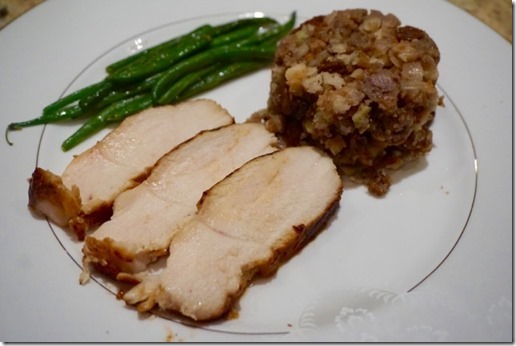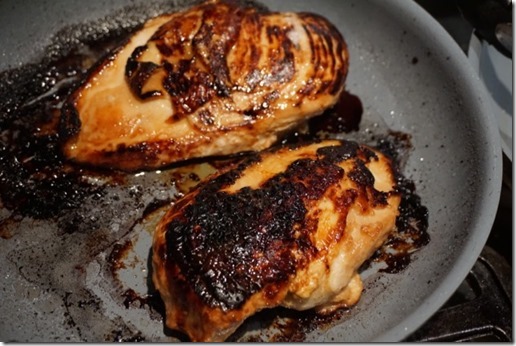Matsukaze-yaki 松風焼きis one of the classic new year's osechi dishes 御節料理. It is usually seasoned with miso and includes pine nuts 松の実 (the name of this dish means "pine breeze grill"). It is essentially ground chicken loaf/patty and many variations are possible. We tried replacing the pine nuts with walnuts, which gave it a very different flavor and color (gets darker) and we liked this variation. This year, I added one more variation which
I saw on line, which is making it with dried fig and gorgonzola cheese.
The combination of blue cheese and sweet dried figs is indeed great and makes it more "Western" in flavor. I served by it by itself with red wine which was a good combination.
Another time I served it with Champagne. It was one of many other items on the plate including stuffed fish cake (one with cod roe and shiso leaves and the other with thin slices of radish and guacamole), boiled octopus,
herring roe,
shibukawa-ni chestnuts,
datemaki Japanese omelet, kumquat in syrup. (these items came from
the Sushi taro osechi box combined with the dishes I made for New Year).
I also made
kimisu 黄身酢 and dressed the octopus.
We had Champagne Lemile Leclerc a Mardeuil Brut Reserve NV with this. The champagne had a nice deep straw color and was a bit assertive with a nice acidity and minerals with some fruity flavor (green apple etc) and quite good and went perfectly with all these assorted snacks.
Ingredients:
Ground chicken: About 400grams.
Dried figs: We used dried mini mission fig. The amount was arbitrary but as fa as I can tell, the more the better.
Gorgonzola cheese: we tried American made from goat cheese (mild) and one from whole cow's milk (stronger). Both worked fine but we liked the stronger one, crumbled the amount arbitrary.
Egg: two large
Olive oil: 2 tsp.
Directions: Using a silicon spatula, I mixed the ground chicken, gorgonzola cheese, dried figs, and eggs and olive oil. I oiled the bottom of a small rectangular baking sheet lined with parchment paper. I spread the mixture to make about half an inch thick layer (see below).
I baked it in a toaster oven (in convection oven mode) preheated at 350F for 20 minutes or until done.*
Because of the parchment paper lining, it came out easily in one sheet. I cut it into rectangles. This is a totally new flavor for this dish. Sweet nutty dried figs and salty and a bit sharp Gorgonzola is indeed nice flavor combination and made this dish more Western than Japanese. It goes well with wine or Champagne.
*This was the second try. I made this in a rectangular frying pan covered with aluminum foil as the original recipe suggested. It became sort of steam/baked and produced a large amount of liquid and when I opened the lid, it was floating in the liquid. All the cheese appeared to have leached out and it was dry and did not taste good. My toaster over baking method worked much better. If I am going with a frying pan method, I will not cover it while it is cooking.























